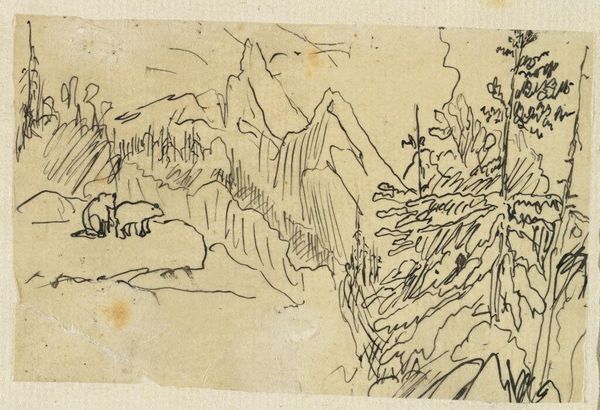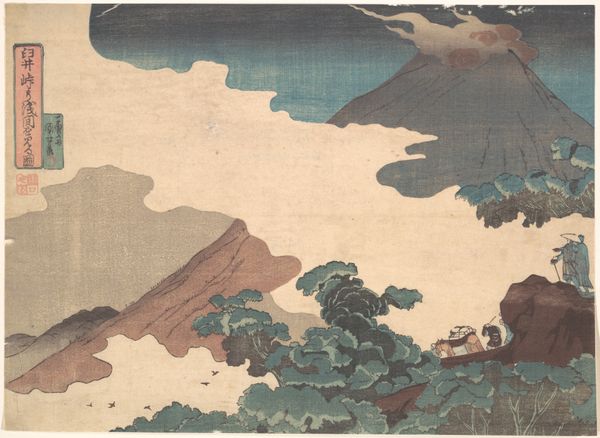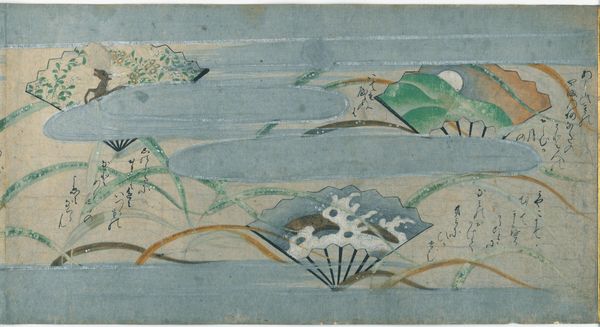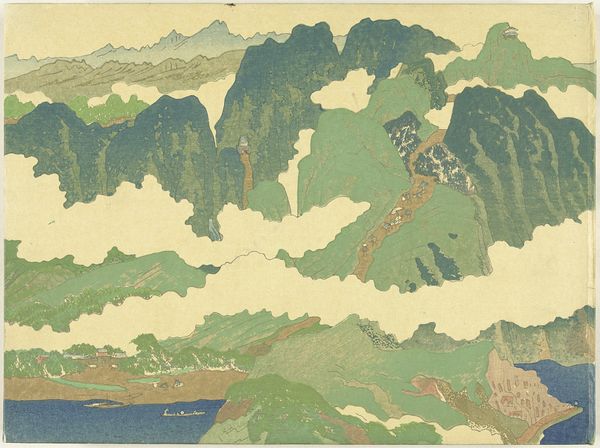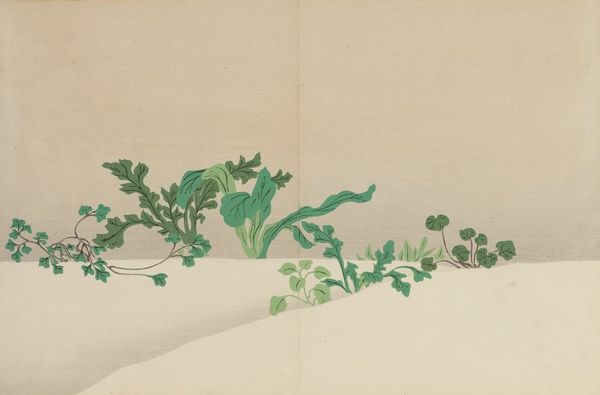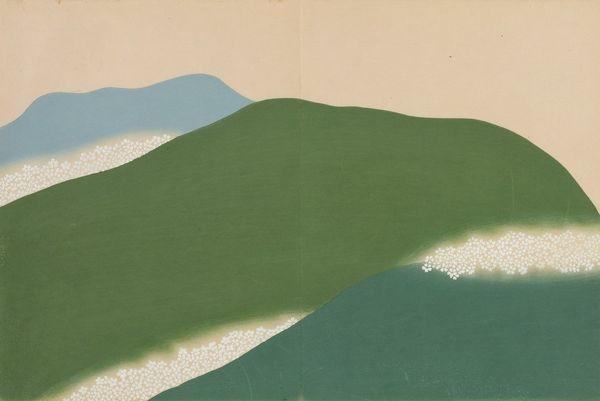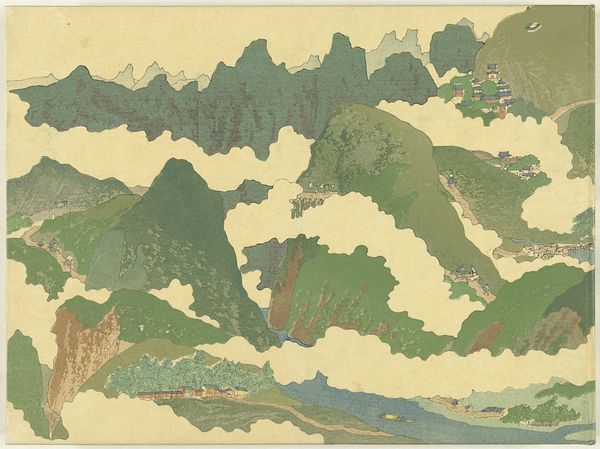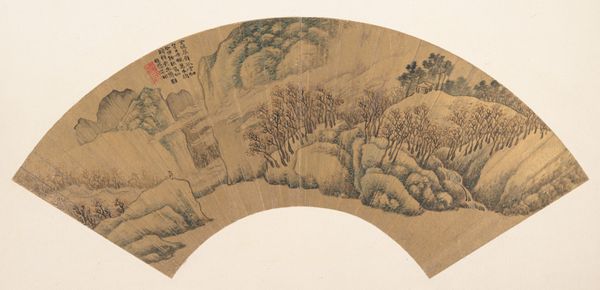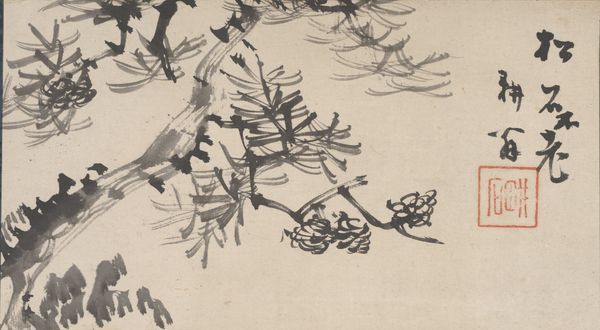
Copyright: Public Domain: Artvee
Editor: This is "Suminoe," a watercolor painting by Kamisaka Sekka, created around 1909-1910. The waves and trees are so stylized, almost like patterns. I’m intrigued by how simplified everything is. What do you see in this piece? Curator: I see a potent visual statement deeply embedded in Japanese social and artistic traditions. Kamisaka Sekka was a key figure in the Rimpa revival, a movement that sought to bring renewed attention to classical Japanese art forms in the face of rapid modernization and Westernization. How do you think this fits into the historical moment it was created? Editor: Well, the waves and trees certainly feel traditional, but the flat, almost graphic style feels… modern. Curator: Precisely! Sekka, along with other artists, strategically re-engaged with traditions to negotiate these changing identities. These wave patterns and that Torii gate resonate with deeply ingrained cultural memories and symbols of national identity, especially considering Japan's rising global presence at the time. Editor: So, the artwork's not just beautiful; it’s also making a statement about Japanese identity? Curator: Exactly! Consider also the *lack* of detail; it subverts the traditional idea of mastery as hyper-realistic rendering, reclaiming a powerful space for design, flattening perspectives – which were themselves a mode of resisting Western ideals. How does viewing the work through that lens change how you understand it? Editor: It makes it feel like more than just a pretty picture. There’s a push and pull between tradition and modernity that’s actually about asserting a specific cultural identity. Curator: Precisely! Sekka provides an incredibly thoughtful framework. He reminds us that engaging with historical narratives can be a profound tool for cultural agency.
Comments
No comments
Be the first to comment and join the conversation on the ultimate creative platform.
